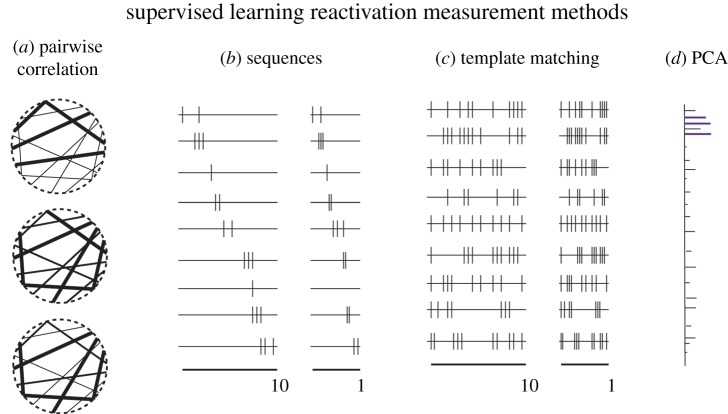Figure 1.
Methods to measure reactivation that use supervised-learning techniques. (a) Pairwise correlation showing the correlations between neuron pairs and how they change from pre-sleep (top), to during the task (middle) and post-sleep (bottom; for example, see [23]). Each dot on the circle represents a neuron and the line thickness indicates correlation strength. (b) Sequence replay in which each line represents the activity of one neuron, thus the sequence of activity during the task (left) can be found in a time-compressed replay during subsequent rest (right; for example, see [24]). (c) Similar time compression can also be found in template matching techniques, for which the actual sequence between neurons is not critical (for example, see [25]). (d) Finally, dimensionality reduction techniques such as principle component analysis (PCA) can also be used to identify cell groups and then be used to track the cell group activity across time (for example, see [26,27]). For examples of unsupervised-learning machine learning techniques that are used for memory reactivation analysis please see [17] in this issue. (Online version in colour.)

